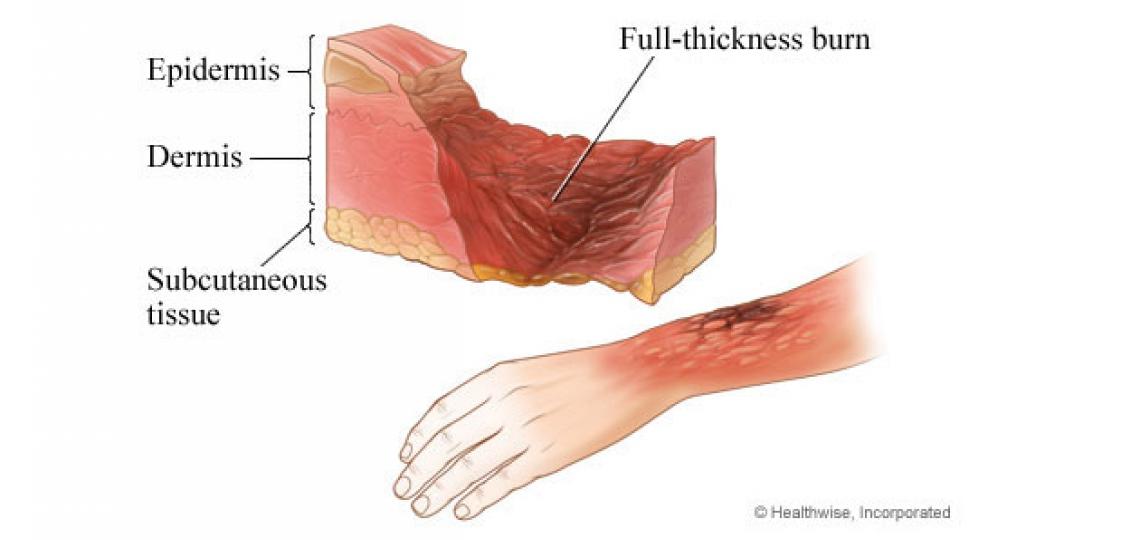Major Burns: Overview
Burns injure the skin and can also injure other parts of your body, such as your muscles, nerves, lungs, and eyes. Burns may also become infected easily. Pain from a burn may get worse in the first few weeks as the burn heals.
The color, texture, and feel of your skin will change as new skin and scar tissue form. You may notice that the burned area feels tight and hard while it is healing. It is important to continue to move the area as the burn heals to prevent loss of motion or loss of function in the area.
Complete healing of a burn may take from a few months to up to a year. Recovering from a burn can be a painful and trying process, but there are steps you can take to make sure that the burn heals as well as possible.
Skin graft surgery: Overview
Skin grafts are very thin sheets of healthy skin taken from one part of the body and put on another part. They are used to treat skin damaged by burns, infection, or injury. When possible, the doctor takes the healthy skin from a place that is hard to see or that’s often covered by clothes.
In many cases, skin grafts only use the top layer of skin. This is called a split-thickness graft. When more layers are needed, it’s called a full-thickness graft. The kind you need depends on how much damage you have and where it is.
In a split-thickness graft, the doctor removes a strip of healthy skin with a special tool. This skin usually comes from the inner thigh or rear end (buttocks). Then the doctor puts the strip on the damaged area and attaches it with stitches or staples. If the area is large, the doctor uses several small strips. You will grow a new layer of skin in the place where the strips of skin were removed.
In a full-thickness graft, only small pieces of skin are used. This is because the skin does not grow back and the edges have to be stitched together. Skin for this type of graft usually comes from behind the ears or from the neck, upper arm, lower belly, or groin area.
If the graft is small, the doctor will probably give you a shot of medicine to numb the area before surgery. For a larger one, you will probably get medicine to make you sleep during surgery.
© 2016-2019 Healthwise, Incorporated.








 Credit
Credit
